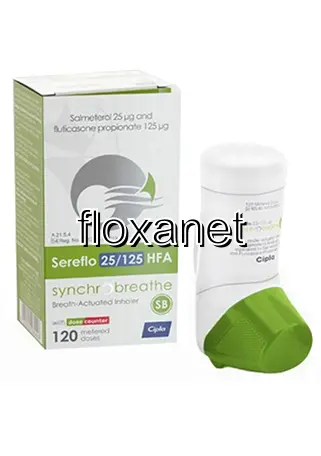| Package | Dosage | Price | Price per Dose | |
|---|---|---|---|---|
| Dosage: 25/50mcg | ||||
| 6 inhaler | 25/50mcg | CAD415.12 | CAD69.19 | |
| 3 inhaler | 25/50mcg | CAD238.30 | CAD79.43 | |
| 1 inhaler | 25/50mcg | CAD92.23 | CAD92.23 | |
| Dosage: 25/125mcg | ||||
| 6 inhaler | 25/125mcg | CAD461.24 | CAD76.88 | |
| 3 inhaler | 25/125mcg | CAD265.21 | CAD88.41 | |
| 1 inhaler | 25/125mcg | CAD101.84 | CAD101.84 | |
| Dosage: 25/250mcg | ||||
| 6 inhaler | 25/250mcg | CAD716.86 | CAD119.47 | |
| 3 inhaler | 25/250mcg | CAD393.97 | CAD131.32 | |
| 1 inhaler | 25/250mcg | CAD149.89 | CAD149.89 | |

Fluticasone / Salmeterol Description
Overview of Fluticasone / Salmeterol
Fluticasone combined with Salmeterol is a widely used medication for managing respiratory conditions, especially asthma and chronic obstructive pulmonary disease (COPD). This medication works by delivering two active ingredients that have complementary roles. Fluticasone is a corticosteroid that reduces inflammation in the airways, making breathing easier and decreasing the frequency of asthma attacks. Salmeterol, on the other hand, is a long-acting beta-agonist (LABA) that relaxes smooth muscles in the airways, providing long-term bronchodilation. This combination offers a dual approach to control symptoms and improve lung function over a sustained period.
How Does It Work?
The effectiveness of Fluticasone / Salmeterol lies in its ability to address different aspects of respiratory challenges. Fluticasone decreases airway inflammation, which is a common feature in asthma and COPD exacerbations. By reducing swelling and mucus production in the airways, it helps decrease the frequency and severity of attacks. Salmeterol, with its prolonged action, ensures the airways remain open for longer durations. The symbiotic effect of both ingredients provides a synergistic benefit, making it an efficient maintenance therapy rather than a rescue medication. It is typically prescribed for regular use to maintain optimal respiratory health.
Benefits and Effectiveness
Many patients report significant improvements in their breathing and overall quality of life when using Fluticasone / Salmeterol regularly. The medication helps in reducing wheezing, coughing, and shortness of breath. Notable benefits include fewer emergency visits caused by severe asthma episodes and better control over daily symptoms. Its long-lasting effects make it a convenient option for individuals who need sustained symptom management rather than quick relief. When used as directed, it can prevent exacerbations and lead to better lung function over time.
Potential Side Effects
While Fluticasone / Salmeterol is generally well-tolerated, some users may experience side effects. Common adverse reactions include throat irritation, hoarseness, headache, or peripheral nervous system symptoms. Some users might notice an increased risk of thrush or fungal infections in the mouth, especially if proper oral hygiene isn’t maintained after inhalation. Less common effects involve chest pain, tremors, or increased heart rate due to the Salmeterol component. It’s crucial to follow the prescribed dosage and report any unusual symptoms to a healthcare professional promptly.
Precautions and Interactions
This medication should be used with caution in individuals with heart problems, high blood pressure, or thyroid issues. It is essential to avoid sudden discontinuation, as this may lead to worsening of symptoms. Patients should inform their doctor about other medications they are taking, especially other bronchodilators or corticosteroids, to prevent potential interactions. Fluticasone / Salmeterol is not suitable for immediate relief during acute asthma attacks; rescue inhalers are recommended instead. Regular monitoring by a healthcare provider is advised to detect any adverse effects early and adjust the treatment plan as necessary.
Usage Instructions
The medication is typically administered via an inhaler device. It’s important to use the inhaler correctly to ensure proper delivery of medication. Patients are advised to follow the dosing schedule strictly, usually once or twice daily, as prescribed. Rinsing the mouth after inhalation can help minimize the risk of oral thrush. Regular adherence to treatment regimens is vital for achieving optimal control over respiratory symptoms and preventing flare-ups. Patients should also keep track of their symptoms and communicate any changes or concerns during follow-up visits.